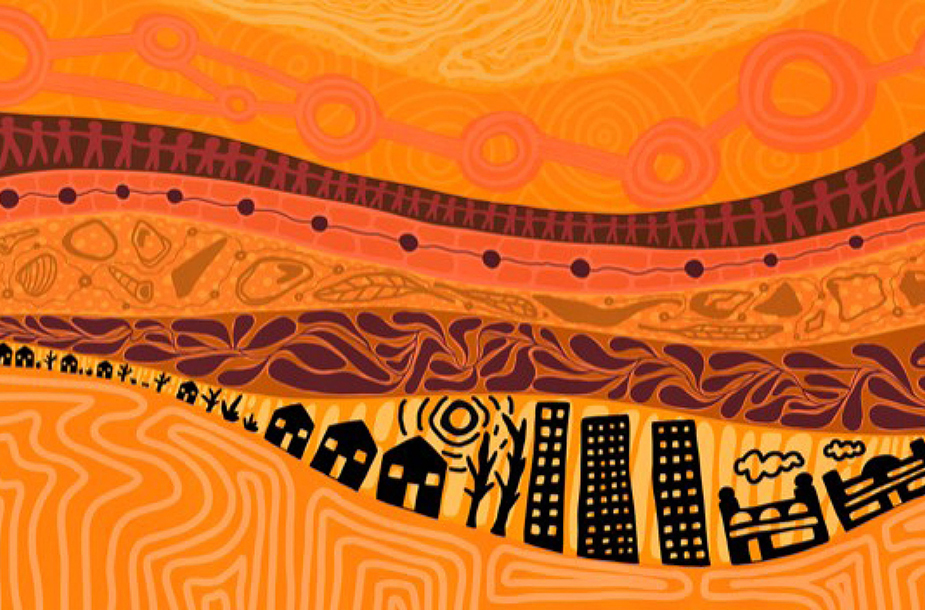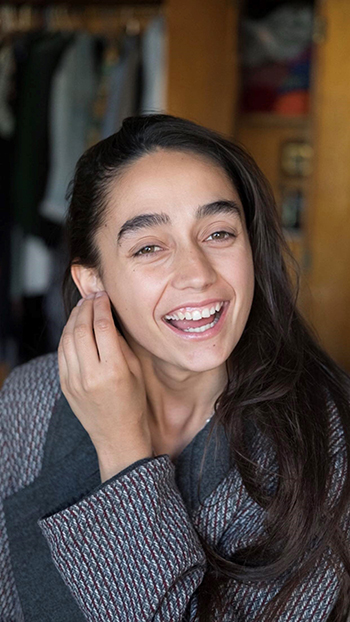 The Building on Aboriginal Communities' Resilience artwork
The Building on Aboriginal Communities' Resilience artwork
A multi-layered, deeply meaningful Indigenous artwork that symbolises the
Building on Aboriginal Communities’ Resilience initiative has just been completed by Newcastle-based multimedia artist, Jasmine Craciun.
Jasmine, 24, is a proud Barkindji Malyangapa woman who passionately believes that art should tell a story and enact change. In this case, her work conveys an insightful message of suicide prevention, aligning with a core objective of the
Towards Zero Suicides initiative to assist Aboriginal people and communities by harnessing the healing benefits of their culture. The topic is near and dear to Jasmine’s heart as she recently lost two members of her extended family within the space of several months. Her personal reflections – and those of her family – are imbued in the design.
“Lots of Aboriginal people can say that suicide is very close to them, unfortunately, but when I was contacted about this project I definitely wanted to be a part of it,” Jasmine says. “I thought about the conversations I’ve had and felt it was important to include them in the work. I also wrote down a list of things that are important to us, as Aboriginal people, in order to feel safe, happy and strong.
“There’s community support, having role models, knowing you have a purpose and being included within your community, education, networks and obviously family.”
 The Building on Aboriginal Communities' Resilience artwork and creator, proud Barkindji Malyangapa woman and multimedia artist,
The Building on Aboriginal Communities' Resilience artwork and creator, proud Barkindji Malyangapa woman and multimedia artist,
Jasmine’s artwork represents the 12 diverse local Aboriginal communities across rural, regional, metropolitan and coastal NSW taking part in the Building on Aboriginal Communities’ Resilience initiative. A significant aspect of the work is the fact that art is integral to shared knowledge, dating back to the earliest rock art.
“For me, it feels like a piece of that, but in a modern, contemporary context. In fact, this artwork is a digital piece created on an iPad, so it’s completely different to anything we would’ve done traditionally. But I feel it’s a way to connect with who we are as people and the things we’re doing to keep our culture alive.”
Jasmine gravitated towards earthy orange tones for the artwork, after initially dabbling in blues and greens.
“The best way to explain it would be layers, organic layers, and within each layer there’s a different aspect of the story I’m trying to tell. For example, one layer is almost a street scene with little houses as well as skyscrapers and townhouses. That represents all the different communities affected by suicide.
“Within another layer there’s a vine that’s symbolises the Muloobinba plant, a sea fern found in Newcastle. I use it to represent growth, connection and community support.”
Additional tiers portray the land and sea, including artefacts traditionally found in middens. “Above that is a row of people,” Jasmine adds. “It signifies connection to family. If you take one of those little people out, you’re breaking that line of people.
“I know that when we’ve lost family members, you see the enormous breadth of people they have touched. Especially in small Aboriginal communities it’s just this enormous domino effect of sadness, so I wanted to show this chain of people who are important, who love you very much.”
The final row has connected circles to portray community networks and the ripple effects that people have in their onward journey. This is particularly relevant to the younger people Jasmine had at the forefront of her mind, although she is hoping the artwork can transcend all ages.
“I really want the artwork to show what you can be and who you are, what you bring to the world, rather than how sad it is when life is over. I want to focus on the person who’s here with us because I think so often we forget that until it’s too late.”
Building on Aboriginal Communities’ Resilience is a NSW Heath
Towards Zero Suicides initiative.